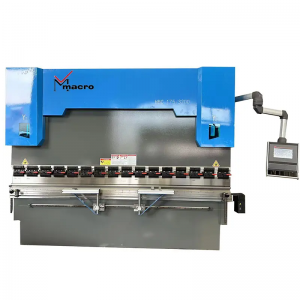Driven by technological advancement and the growing demand for precision metal manufacturing in various industries, hydraulic CNC bending machines have bright prospects for development. These machines play a vital role in bending and shaping sheet metal with high precision and efficiency, making them indispensable in the manufacturing industry.
One of the key factors for the bright future of hydraulic CNC press brakes is the integration of advanced automation and control systems. By employing CNC technology, these machines provide greater precision, repeatability and flexibility in metal bending operations. The ability to program complex bending sequences and parameters with minimal manual intervention significantly improves the productivity and quality of metal fabrication processes.
Furthermore, the growing emphasis on sustainability and energy efficiency has led to the development of environmentally friendly hydraulic CNC press brakes. Manufacturers are increasingly focusing on designing machines that consume less energy, generate minimal waste and comply with environmental regulations. This trend is in line with the industry’s commitment to reducing its carbon footprint and promoting sustainable manufacturing practices.
Furthermore, the expanding application areas of hydraulic CNC bending machines in different sectors such as automotive, aerospace, construction, and electronics are driving its market growth. The versatility of these machines in handling a variety of metal materials and producing complex parts makes them an indispensable asset in modern manufacturing facilities.
Additionally, continued advancements in materials science and engineering are expected to further enhance the capabilities of hydraulic CNC press brakes. The development of new alloys, composites and lightweight materials will provide these machines with the opportunity to adapt and meet changing industry needs.
In summary, the future of hydraulic CNC press brakes looks promising, driven by technological innovation, sustainability initiatives, expanding application areas and advances in materials science. As these machines continue to evolve and meet the changing needs of manufacturing, they will play a key role in shaping the future of metal fabrication processes.

Post time: Sep-06-2024
